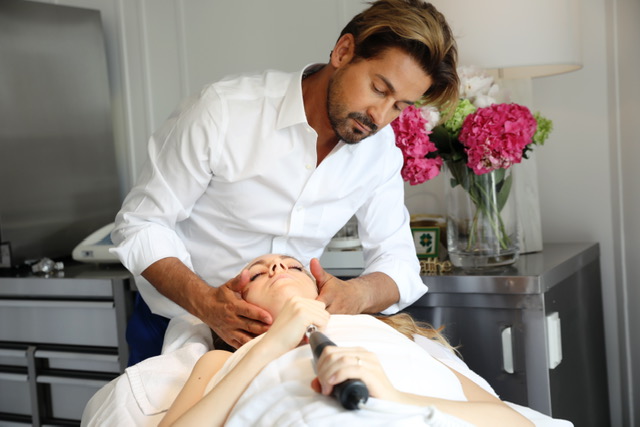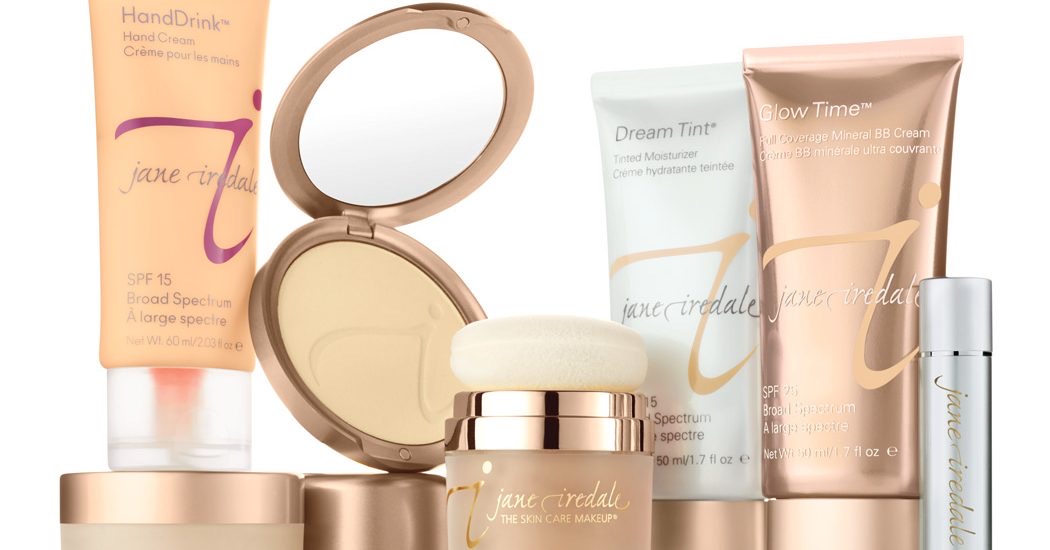
X

Blog
2020-03-13

That’s right — it’s not just sun that you need to be concerned with. Any light from natural and artificial sources (think light bulbs) has the ability to induce free radical damage to the cells of your skin.

To understand what kinds of sun care products are best for you, it makes sense to understand the history and science involved in developing sun protection testing.
The term SPF was introduced by the owner of the Piz Buin company, Franz Greiter, for sun protection. People were getting burned when climbing on the mountain Piz Buin in the Swiss Alps. His solution was to created a basic sun protection cream — Gletscher (or glacier) Creme. When other sun creams came on the market in the 1960s, and he wanted to prove that his sun protection was better, he devised a way to test its efficacy.

Today the testing in labs is a little more accurate — still using human testers (1), UV lamps and digital devices read the redness on skin. Unfortunately, it’s still the reddening of the skin that’s being measured, not the DNA damage from free radicals. A more clinically correct approach would involve taking multiple biopsies of every patch at timed intervals: this would actually allow to analyze changes in DNA and cells. However, this method would be super expensive, and understandably, virtually impossible to apply in real word.
The important thing to understand is that an SPF 10, for example, means that the product allows you to stay in the sun for ten times longer before looking red (solar erythema).
Unfortunately, we now know that the so-called “chemical sun protections” do not protect from free radical damage and free radicals are what scientists believe causes sun damage, DNA mutations and skin cancer. (2)
I like this analogy: If you injure your ankle and you’re a dancer, you get a cortisone shot, you feel better and you perform. The problem is the shot masks the damage on the inside and you could harm the joint more. You could end up with a bigger injury.
Chemical sunscreen may keep you from getting red, but who knows what is happening below the surface, at the cellular level? There are lots of immunologists who believe the increase in skin cancer is because people are overly reliant on chemical sun protection. (3) (4)
Physical sunscreen, on the other hand, offers a more “intelligent” protection. The best ray scattering one is zinc oxide. It protects from a very wide spectrum of rays (280-400 nm). Titanium dioxide also prevents rays (315-340 nm) from penetrating in the skin, so there is much less free radical damage.

We’re very lucky in the United States because sun protection is considered over-the-counter medication and will show on the label how much zinc and titanium it contains. Just know that the higher the zinc oxide, in tandem with the titanium dioxide, the better it is.
I recommend watching out for cosmetic sun products that are completely oil based, like several organic companies use. Oil will actually conduct the heat waves inside of the skin. When you want to cook a steak, you put oil between the pan and the meat because the oil transmits the heat. This is not what you want on your skin.
The most motivating news is that there are studies that prove that if you use physical sun protection every day for a year, your skin is going to rejuvenate like it would if you were using topical rejuvenators (like peptides or Retin-A®).
And if you apply effective sun protection daily, your skin won’t get damaged during the day. Everything improves — pigmentation, rosacea, redness — everything.

(1) This causes some debate on the safety of the paid testers, as UV light is well-known for being mutagenic (cancer-inducing).
(2) Journal of Investigative Dermatology. October 2003. “Sunscreen inadequately protect against ultraviolet-A-induced free radicals in skin: implications for skin aging and melanoma?” R. Haywood, P. Wardman. R. Sanders, C. Linge.
(3) Marcello Monti Phd. University of Milan and Homanitas Research Hospital Rozzano (MI). “L’inganno della protezione solare”. April 7th 2012
(4) lef.org “The Sunscreen Paradox” June 2016. Steven V. Jaoyal M.D.
Sun Times Ahead. Are You Ready?

If you only do one thing for your skin, most skincare professionals will tell you to protect it from sun and light exposure.
That’s right — it’s not just sun that you need to be concerned with. Any light from natural and artificial sources (think light bulbs) has the ability to induce free radical damage to the cells of your skin.
There are very good options for light protection, but it’s not as simple as slathering on a layer of sunscreen and voilá — complete protection — there are many options to consider and debate.

To understand what kinds of sun care products are best for you, it makes sense to understand the history and science involved in developing sun protection testing.
The term SPF was introduced by the owner of the Piz Buin company, Franz Greiter, for sun protection. People were getting burned when climbing on the mountain Piz Buin in the Swiss Alps. His solution was to created a basic sun protection cream — Gletscher (or glacier) Creme. When other sun creams came on the market in the 1960s, and he wanted to prove that his sun protection was better, he devised a way to test its efficacy.
Franz Greiter team taped off squares on the backs of women, covered the skin on each square with different products, leaving one uncovered with no sun protection. Then the women sat in the sun. The timing was noted when redness appeared on the skin in each of the squares, including the unprotected skin square. If one area was red in double the time the unprotected skin was, it was SPF 2. If is four times the length, SPF 4. And so on.

Today the testing in labs is a little more accurate — still using human testers (1), UV lamps and digital devices read the redness on skin. Unfortunately, it’s still the reddening of the skin that’s being measured, not the DNA damage from free radicals. A more clinically correct approach would involve taking multiple biopsies of every patch at timed intervals: this would actually allow to analyze changes in DNA and cells. However, this method would be super expensive, and understandably, virtually impossible to apply in real word.
The important thing to understand is that an SPF 10, for example, means that the product allows you to stay in the sun for ten times longer before looking red (solar erythema).
Unfortunately, we now know that the so-called “chemical sun protections” do not protect from free radical damage and free radicals are what scientists believe causes sun damage, DNA mutations and skin cancer. (2)
I like this analogy: If you injure your ankle and you’re a dancer, you get a cortisone shot, you feel better and you perform. The problem is the shot masks the damage on the inside and you could harm the joint more. You could end up with a bigger injury.
Chemical sunscreen may keep you from getting red, but who knows what is happening below the surface, at the cellular level? There are lots of immunologists who believe the increase in skin cancer is because people are overly reliant on chemical sun protection. (3) (4)
Physical sunscreen, on the other hand, offers a more “intelligent” protection. The best ray scattering one is zinc oxide. It protects from a very wide spectrum of rays (280-400 nm). Titanium dioxide also prevents rays (315-340 nm) from penetrating in the skin, so there is much less free radical damage.
The best sun protection contains concentrated zinc and titanium that has been micronized. A lot of times, some form of silicone is added to help the product spread more easily. And silicone is from the mineral silica, so it’s natural.

We’re very lucky in the United States because sun protection is considered over-the-counter medication and will show on the label how much zinc and titanium it contains. Just know that the higher the zinc oxide, in tandem with the titanium dioxide, the better it is.
I recommend watching out for cosmetic sun products that are completely oil based, like several organic companies use. Oil will actually conduct the heat waves inside of the skin. When you want to cook a steak, you put oil between the pan and the meat because the oil transmits the heat. This is not what you want on your skin.
The most motivating news is that there are studies that prove that if you use physical sun protection every day for a year, your skin is going to rejuvenate like it would if you were using topical rejuvenators (like peptides or Retin-A®).
And if you apply effective sun protection daily, your skin won’t get damaged during the day. Everything improves — pigmentation, rosacea, redness — everything.

(1) This causes some debate on the safety of the paid testers, as UV light is well-known for being mutagenic (cancer-inducing).
(2) Journal of Investigative Dermatology. October 2003. “Sunscreen inadequately protect against ultraviolet-A-induced free radicals in skin: implications for skin aging and melanoma?” R. Haywood, P. Wardman. R. Sanders, C. Linge.
(3) Marcello Monti Phd. University of Milan and Homanitas Research Hospital Rozzano (MI). “L’inganno della protezione solare”. April 7th 2012
(4) lef.org “The Sunscreen Paradox” June 2016. Steven V. Jaoyal M.D.


